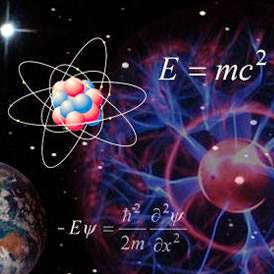 |
| Dipole-dipole interactions between two chromophores were imaged on the atomic level using scanning tunneling microscopy. Image credit: Guoyan Wang and Daping Sun |
Photosynthesis and other vital biological reactions depend on the interplay between electrically polarized molecules. For the first time, scientists have imaged these interactions at the atomic level. The insights from these images could help lead to better solar power cells, researchers added.
Atoms in molecules often do not equally share their electrons. This can lead to electric dipoles, in which one side of a molecule is positively charged while the other side is negatively charged. Interactions between dipoles are critical to biology -- for instance, the way large protein molecules fold -- often depend on how the electric charges of dipoles attract or repel each other.
One process where dipole coupling is key is photosynthesis. During photosynthesis, dipole coupling helps chromophores – molecules that can absorb and release light – transfer the energy that they capture from sunlight to other molecules that convert it to chemical energy.
Intriguingly, a consequence of dipole coupling is that chromophores may experience a strange phenomenon known as quantum entanglement. Quantum physics suggests that the world is a fuzzy, surreal place at its very smallest levels. Objects experiencing quantum entanglement are better thought of as a single collective than as standalone objects, even when separated in space. Quantum entanglement means that chromophore properties can strongly depend on the number, orientations and positions of their neighbors.
Inside Science: Scientists Capture 'Spooky Action' In Photosynthesis, Charles Q. Choi

No comments:
Post a Comment